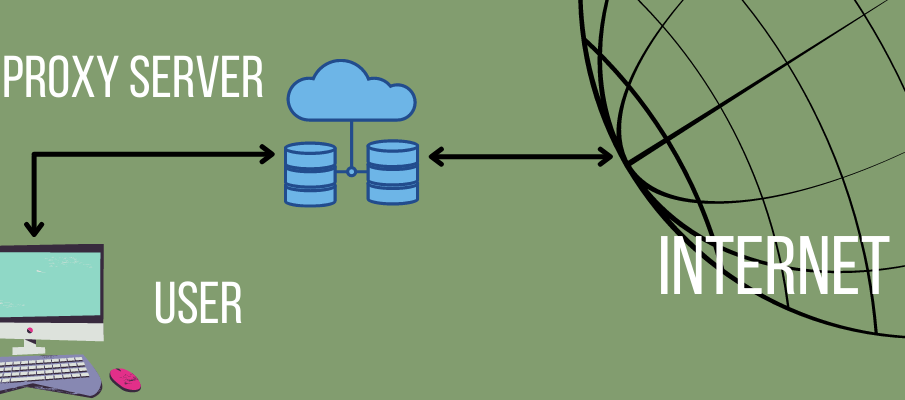All about the private proxy servers you should know and use

Do you want to access an Internet site that has regional restrictions and is not normally reachable from your country? For privacy issues, do you not want to leave traces of your passage on a particular Internet site? Well, then the PrivateProxy team gives you ipv4 private proxy service to use and enjoy. Does this issue interest you, but you have no idea what a proxy server is and how to make use of it? Fear not, the whole thing is much simpler than it sounds.
As you will discover in the course of reading this guide of mine, the private proxy is nothing more than computers to which you can connect in order to disguise the real geographical location of the “original” device: there are proxies from practically every nation, many of them even free and retrievable from ad-hoc built Websites.
So, without further hesitation, get nice and comfortable and carefully read everything I have to explain to you on the subject: I guarantee that, in a matter of minutes, you will have acquired the necessary skills to achieve the goal you set for yourself. That said, there is nothing left for me to do but wish you good reading and wish you the best of luck with everything!
Table of Contents
Private proxy server: what is it
A private proxy server is nothing more than a remote, typically public, server to which you can connect to request access to Web pages on your behalf. In other words, it is a computer that stands between the device requesting its services and the Internet, which allows you to mask your IP address and, consequently, your geographic location and the name of the service provider.
There are at least three types of proxy servers: Web or HTTP/HTTPS proxies, i.e., those that allow only browser-generated traffic to be “shielded”; transparent proxies, which are only meant to monitor outgoing connections and prevent access to certain online sites/services; and SOCKS-type proxies, which can also be used by other programs in addition to the browser.
In order to use a proxy server, you need to know its IP address and port, and then set this information within the program, application, or operating system you are interested in. Exceptions to this are some online services that provide the ability to use Web proxies directly from their page in the browser, without having to do any configuration.
Clearly, the use of a private proxy can adversely affect the speed of Internet response. In addition, using a proxy does not always mean security: many of these servers, especially the free ones, do not support data encryption; moreover, the proxy server is able to store the data of incoming and outgoing connections related to all computers that connect to it; lastly, proxies cannot guarantee anonymity, especially if you log in to your personal accounts and if you use a browser associated with a certain profile.
You should be well aware of all these aspects before you do anything.
Where to find trustfully private proxy servers
Having made the appropriate clarifications, let me point you to where to find free proxy servers quickly and easily. First, if you need to use a Web proxy to disguise your IP address while surfing the Internet, you might consider using an online service suitable for the purpose, thus eliminating the need to adjust your browser settings.
Among the most popular online services of this type is PrivateProxy.me, a “proxy browser” that allows you to camouflage your IP address in a very simple way: after reaching the Web page I pointed out earlier, enter the address of the Internet site you wish to visit inside the Enter web address text field and use the Proxy location drop-down menu to choose the “nationality” of the IP address you will acquire while browsing.
If you wish, click on the More options menu to set additional browsing options: encrypt page and/or URL, allow or block cookies, remove scripts or objects from the page. Once you have completed the appropriate adjustments, click on the Go button to access the page of your choice.
And PrivateProxy.me is as well a service that works: after entering the URL of the Web page you want to visit in the text field provided, make use of the Select Server drop-down menu to choose the location you want and click on the Navigate button in order to display the page you are interested in. Depending on the location you decide on and the status of the services, browsing may not be as fast.
If, on the other hand, you prefer to manually configure the use of proxies, you need to get the IP addresses of the servers to be used with their ports using one of the many Websites that offer this service. In particular, you can rely on PrivateProxy.me, a portal that provides quick access to a list of free proxy servers, with the possibility of filtering them according to certain parameters.
So, to get started, connect to this Website and use the menus, text fields, and boxes displayed on the screen, to skim the results according to what your needs are. Below I list the parameters you can set.
- Country: the location of the proxy server and its IP address.
- Proxy speed: the response speed of the proxy server (in milliseconds). I recommend that you leave this parameter unchanged, as setting speeds too low may lead you to fruitless searches.
- Port number: the listening port number of the proxy server. Use this parameter only if the program/application you are interested in can only be set to a given port.
- Private proxy types: To be precise, HTTP and HTTPS proxies can be used for Web browsing without and with encryption, while SOKCKS 4 and SOCKS 5 proxies can also be used via other compatible programs/apps.
- Anonymity: the degree of anonymity offered by the server (High – high, Average – medium, Low – low, and No – none).
Once you have set the parameters you deem appropriate, click on the Show button to get a list of identified free proxy servers. For each of them, the main characteristics are listed: location, response time, proxy type, and date/time of the last update. Once you have identified the server you think is right for you, note its type, IP address, and port: you will need them before long.








